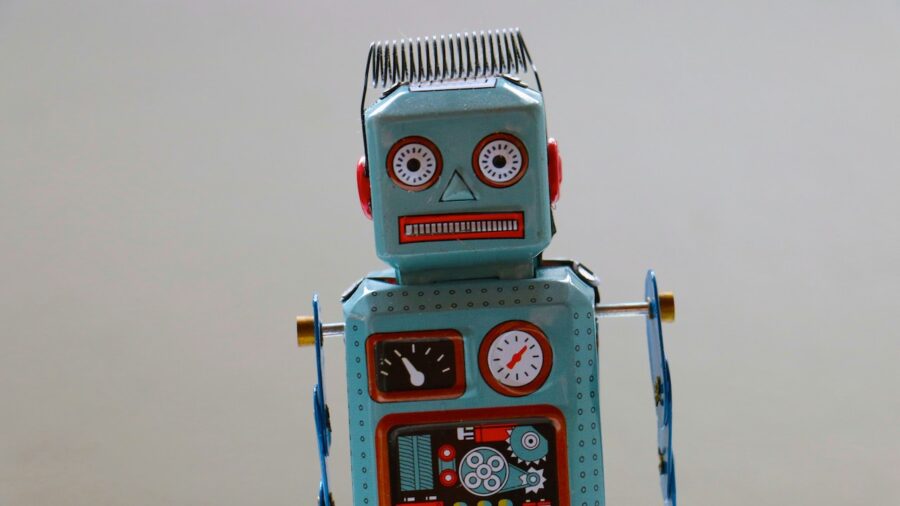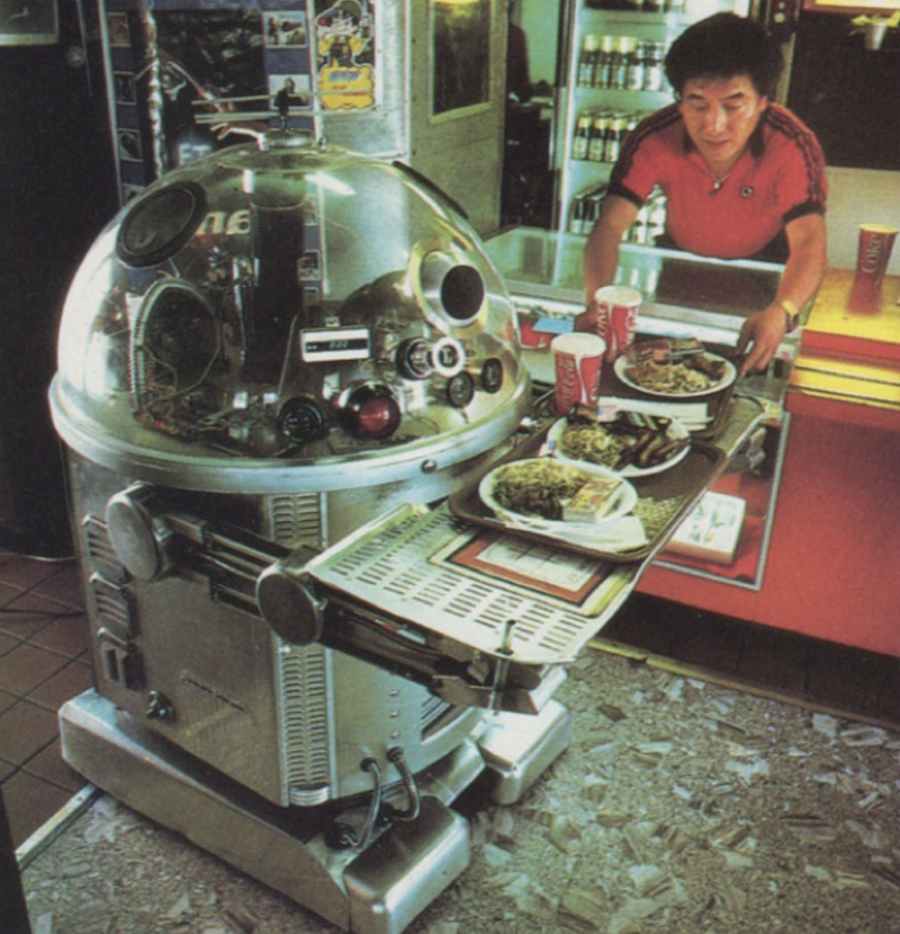Actual Robot Waiters Were Serving Food In The 80s

Apparently, the 1980s were much closer to a Jetson-style future than most of us really thought. Sure, we were all in love with the droids from Star Wars, terrified of Terminators, and the Balboas did have a robot butler in Rocky IV.
But, as it turns out, they weren’t the only ones. In 1983, in Pasadena, California, Chinese fast-food restaurant Two Panda Deli put a pair of robots to work as waiters. Robot waiters in a time when it was hard to even imagine such things.
The robot waiters were named Tanbo R-1 and Tanbo R-2. The Japanese-built automaton duo was responsible for lugging trays of fried rice, spicy pork, and chow mein to waiting diners.

The two robot waiters looked suspiciously like R2D2, stood four-and-a-half feet tall, and weighed 180 pounds. The Tanbos were programmed to serve customers in three languages and were quite the sensation, delivering food and cracking jokes.
While this sounds like a great time for the whole family, these robot waiters had some shortcomings.
First off, they cost $20,000 each (more than $60,000 adjusted for today’s market). That’s prohibitively expensive for most folks, but add to that price tag the fact that they were prone to dropping food. And, in instances where they misunderstood voice commands, could be a bit insulting.
Here’s what a 1983 Miami News article said about servers at Two Panda:
The pair at the Two Panda Deli, a fast-food Chinese eatery in Pasadena, tend to blur their words drunkenly when their 12-volt power cells run down, and they’ve been known to drop food and spin in circles when police radios operate nearby.
They’re programmed to be nice to customers — “Will there be anything else?” and “See you tomorrow” — in Japanese, English and Spanish. Patrons whose commands confuse the pair get the response: “That’s not my problem,” accompanied by a short blast of disco music to which the bubbleheads dance back and forth.
“That’s not my problem,” and disco? Someone’s not getting a tip.
Ultimately, maintenance and convenience issues led Two Panda owner Shayne Hayashi—who also had the North American sales rights on the robot waiters—to abandon the experiment.
If nothing else, this gave us a brief glimpse at our present day and possible future, one with an android in every home (or at least in every restaurant). At the time, it was not to be. But these robot waiters seemed to only bring us closer to the inevitable man vs. robot battle for global supremacy. Sometimes, things all start on basic levels (like food service).
Now, more and more restaurants and establishments are moving toward autonomous aspects of food service. Whether it’s ordering, food prep, drink making, or even delivery, our current restaurant scene is looking a bit like what Two Panda Deli did back in the 1980s. Only now it’s getting cheaper and more ubiquitous for robot waiters to make an appearance.
Such is the nature of technology as we press towards the future. Robot waiters might just be an eventuality. Will we have to tip them? Probably, and just imagine what happens when you don’t hit 20% with the gratuity.










